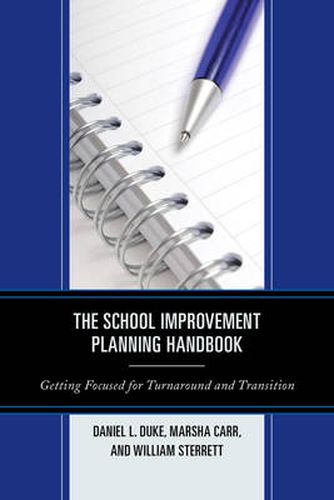Readings Newsletter
Become a Readings Member to make your shopping experience even easier.
Sign in or sign up for free!
You’re not far away from qualifying for FREE standard shipping within Australia
You’ve qualified for FREE standard shipping within Australia
The cart is loading…






Developing and updating school improvement plans is an annual ritual for virtually all school principals and their school improvement committees. Still, large numbers of schools continue to produce disappointing outcomes. The authors believe that part of the problem is the result of plans that focus on the wrong targets and that rely on ineffective strategies for improvement.
To help principals and their school improvement committees develop and implement plans with a greater likelihood of success, the authors offer a step-by-step process for school improvement planning. They go on to pinpoint specific school improvement goals, including raising reading and mathematics achievement, building robust school cultures, addressing the needs of English language learners, improving instruction, and reducing absenteeism and dropouts.
For each goal, a variety of objectives and proven strategies is presented along with sample school improvement plans. The book addresses the differences in planning to turn around a low-performing school, planning to sustain improvements over time, and planning to move a good school to a great school.
$9.00 standard shipping within Australia
FREE standard shipping within Australia for orders over $100.00
Express & International shipping calculated at checkout
Stock availability can be subject to change without notice. We recommend calling the shop or contacting our online team to check availability of low stock items. Please see our Shopping Online page for more details.
Developing and updating school improvement plans is an annual ritual for virtually all school principals and their school improvement committees. Still, large numbers of schools continue to produce disappointing outcomes. The authors believe that part of the problem is the result of plans that focus on the wrong targets and that rely on ineffective strategies for improvement.
To help principals and their school improvement committees develop and implement plans with a greater likelihood of success, the authors offer a step-by-step process for school improvement planning. They go on to pinpoint specific school improvement goals, including raising reading and mathematics achievement, building robust school cultures, addressing the needs of English language learners, improving instruction, and reducing absenteeism and dropouts.
For each goal, a variety of objectives and proven strategies is presented along with sample school improvement plans. The book addresses the differences in planning to turn around a low-performing school, planning to sustain improvements over time, and planning to move a good school to a great school.